The AeroPress is one of the most versatile coffee brewers in the world, and is beloved by many for its ability to prepare many different styles of beverages.
In fact, its adaptability has led other companies and brands to design and create their own accessories for the AeroPress, including a number of different filters.
However, the material of an AeroPress filter – usually either paper or metal – has a significant effect on extraction, and thereby the final cup profile.
To learn more about the differences between paper and metal filters, I spoke with Valerian Hrala, Campus Director at Boot Coffee, and Ben Jones, the 2016 US AeroPress Champion. Read on to find out more.
You may also like our article on how to brew coffee with the AeroPress using different grind sizes.
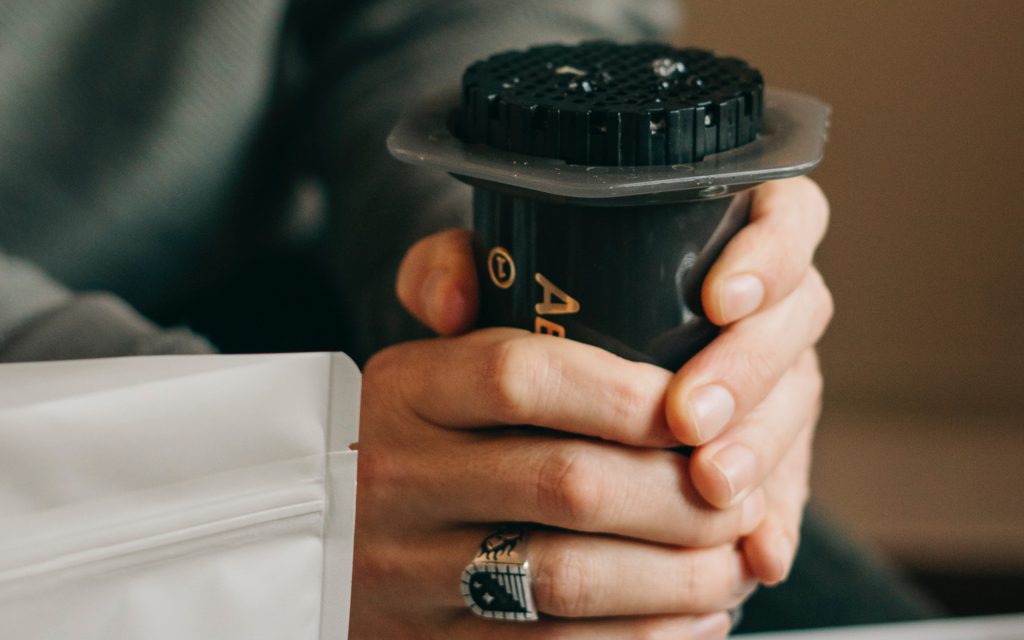
How do paper and metal filters affect extraction and flavour differently?
When it comes to the AeroPress, there are two main types of filter: paper and metal.
Paper filters are popular for many reasons, including their ability to absorb some of the oils present in coffee during extraction. This leads to a cleaner-tasting flavour profile with a less enhanced body.
However, in terms of performance and how they affect coffee flavour, there is a lot of variation between paper filters. This can depend on the type of material used to manufacture them, or whether they are bleached or unbleached.
Moreover, given the rising interest in sustainability in the coffee industry, more and more people are opting for reusable coffee filters, such as metal, which help to reduce waste.
For some years now, several brands have manufactured and sold metal filters which are designed to be used with the AeroPress. However, in 2022, AeroPress launched its own metal filter, which is made from premium grade 316 stainless steel.
According to AeroPress, the main difference between its metal and paper filters is that “the reusable metal filter allows oils to pass through for a somewhat fuller-bodied cup of coffee, whereas the paper micro-filter keeps out those oils for a cleaner flavour profile”.
Testing the metal AeroPress filter
Valerian tells me that to test the differences between the AeroPress metal filter and the standard bleached paper AeroPress filter, he prepared two batches of coffee using each type of filter.
He explains he used a lot sourced from Gesha Village in Ethiopia, which was harvested in June 2022. For reference, Valerian says this coffee typically has notes of tropical fruit and cacao nibs, with aromas of pineapple.
For his recipe, Valerian says he used 15g of medium ground coffee to 260g of water for both batches. He tells me he used around 104g of the brew water to pre-wet the grounds before stirring for ten seconds. He then added the remaining water and pushed down the plunger for approximately 30 seconds.
Both coffees were then decanted into separate thermal carafés and cupped alongside each other.
“I was very surprised by the performance of the metal filter,” he says. “I was expecting a much murkier beverage which contained microfines, but by using a medium grind size, I ended up with a coffee which was full bodied with a clean aftertaste.”
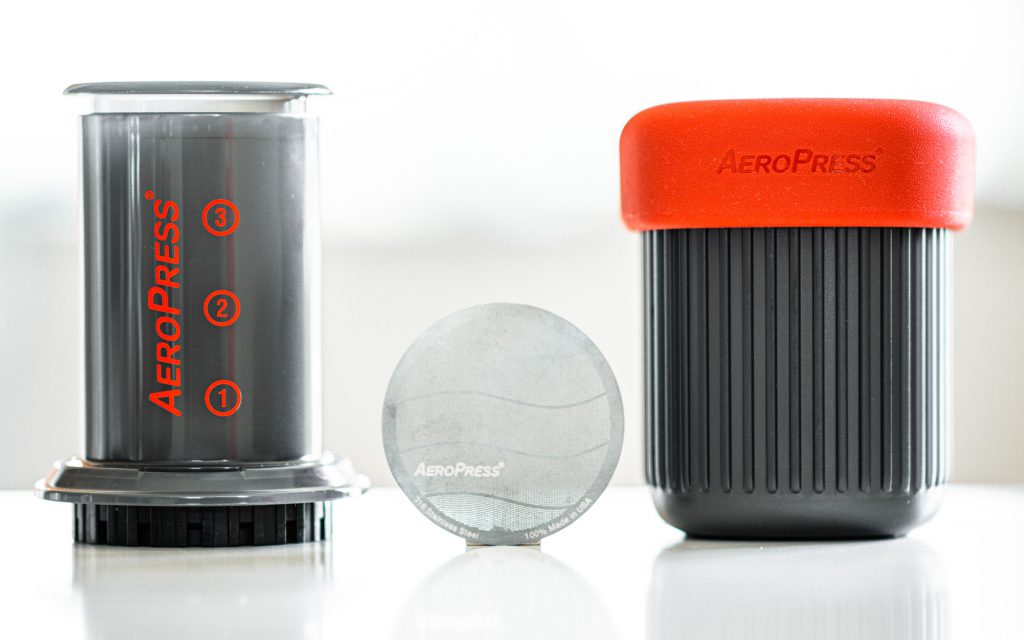
How can you create different flavour profiles using the metal AeroPress filter?
It’s clear that using a metal filter results in a fuller-bodied cup of coffee. But is there a way to experiment with metal filters to extract different sensory profiles?
Ben explains that changing the grind size when brewing with a metal filter allows you to achieve a variety of results.
“In terms of cup profile, metal filters allow you to extract a little bit of extra sediment,” he says. “This creates a sensory profile closer to a French press.”
Although coffee quality, roast level, and water quality all play an instrumental role in the extraction of flavours and aromas, grind size is key when using a metal filter.
Ben tells me that no matter which coffee you use, particle size distribution will inevitably have an effect on body and taste. This term refers to the variance in size of ground coffee particles, including the volume of “boulders” (larger-sized particles) and “fines” (smaller-sized particles).
The effects of grind size
If there is too much variance in particle size distribution, you can end up both underextracting and overextracting your coffee at the same time. This will taste both sour and bitter, meaning you aren’t able to experience the full range of the coffee’s flavours.
Ultimately, to achieve a more uniform particle size distribution, you need to invest in a high-quality grinder. However, when brewing with a metal filter, it is often preferable to have a slightly broader particle size distribution so that you can highlight different aspects of a coffee.
For example, Ben explains that if you grind some of your dose to a slightly different grind setting, you can accentuate acidity. He adds that this could be especially useful when brewing darker roasts, which tend to lack acidity.
However, it’s important to note that using different grind sizes when brewing one coffee takes considerable skill, and may not always produce the best-tasting results.
Ben also tells me about “stacking”, which is a technique he used in his winning 2016 US AeroPress Championship routine.
This method is when you layer several filters in the AeroPress filter cap. Ben explains that you can use multiple paper or metal filters, or even a combination of both.
“It increases resistance in the brew chamber,” he says. “Combining a metal filter with several paper filters helps to provide more structure.
“If you want to emphasise sweetness in the cup, you can add a couple of extra grams of coffee in your dose, stack the filters, and then use bypass brewing (when you add extra water once the coffee is extracted),” he adds.
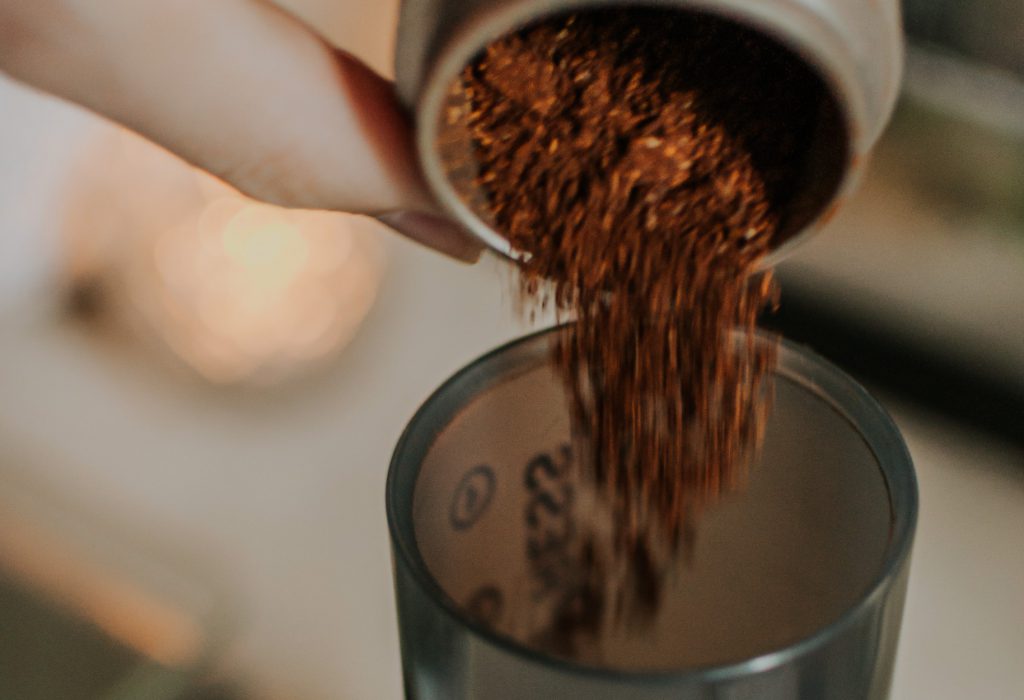
Brewing different drinks with a metal filter
The versatility of the AeroPress means that you can prepare a variety of different drinks with it, including espresso-style beverages.
“To make an espresso-style drink with the AeroPress, you should use a metal filter as it won’t absorb oils or change the texture,” Ben says. “You will also extract more fines with a metal filter.”
Ben shares his current favourite recipe for brewing espresso-style beverages with the AeroPress below. He uses Olympia Coffee’s medium-dark roasted Morning Sun coffee, which currently uses beans sourced from Los Milagros Organic in Chiapas, Mexico.
Ben adds that the coffee has notes of chocolate, hazelnut, raisin, vanilla, and honey.
Ben’s espresso-style AeroPress recipe
- For this recipe, you need to use the inverted AeroPress method, as well as a metal filter
- Grind 20g of coffee slightly coarser than for espresso (Ben says he uses a conical burr grinder to do this)
- Add 75g water just off boil and stir vigorously
- At 00:45, secure the filter cap, flip the AeroPress, and push down on the plunger
- The press down should be around 30 seconds
- When you hear a hissing sound, push the plunger all the way to the bottom
- Ben explains that there won’t be any crema on the drink, but it will be a concentrated beverage with a thick texture
Ben recommends enjoying the espresso-style drink straight, or adding your preferred type of milk.
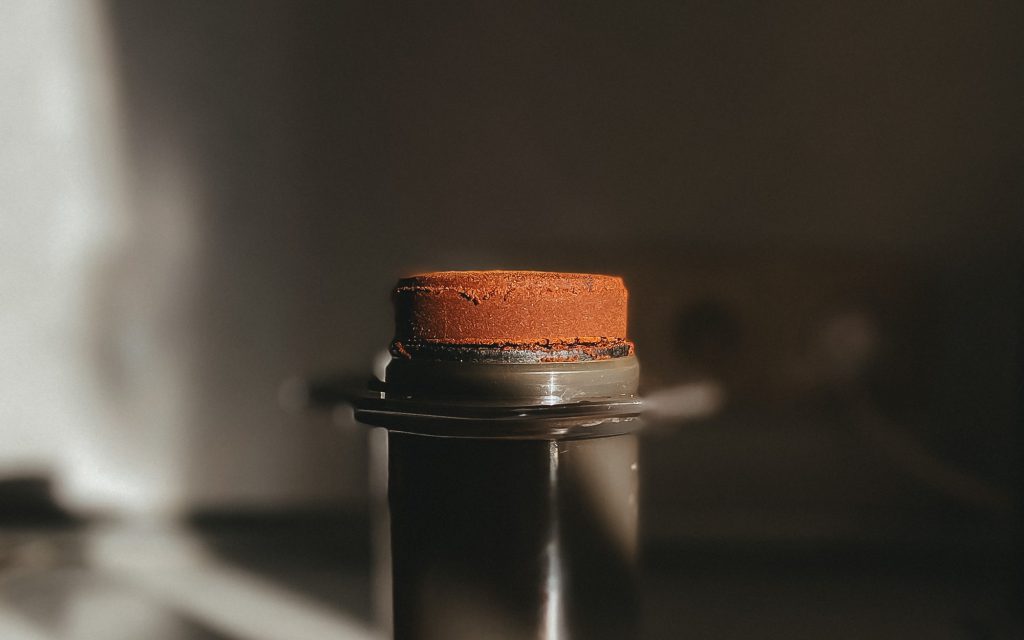
Tips and advice on using metal AeroPress filters
Although reusable metal AeroPress filters are certainly more sustainable, proper cleaning and maintenance is essential if you want to consistently extract high-quality coffee when you brew with them.
Ben says that to easily maintain a metal filter, you should treat it similarly to a screen in an espresso machine. This is the metal mesh filter which screws into the grouphead to prevent ground coffee from entering the machine.
Ben says that between brewing coffees, he rinses his metal AeroPress filter with hot water. He adds that once a week, he soaks the metal filter in water with a small amount of espresso machine cleaning powder. He explains that this helps to remove any buildups of oil or sediment.
Changing grind size and brew time
When it comes to using different grind sizes with metal filters, Ben adds that you generally need to compensate by changing the total brew time.
For instance, he tells me that with a coarser grind size, you need a longer brew time. Ben recommends between two and a half minutes and three minutes, which can help to highlight the sweeter flavour notes.
Conversely, he says brewing with a metal filter for shorter periods of time, but with a finer grind size, can accentuate fruity flavours, as well as bringing out some cacao notes.
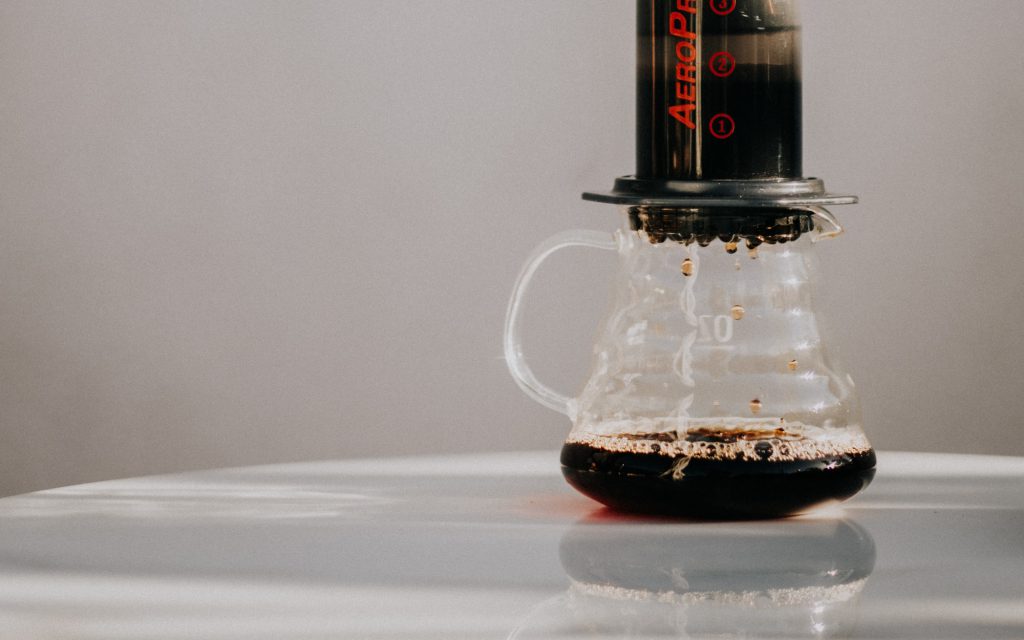
While paper filters continue to be popular, it’s clear that more and more people are pivoting to metal filters for their AeroPress for a number of reasons. Irrespective of the motivation, however, it’s clear that you can use them to brew a range of different beverage styles, as well as manipulating a coffee’s flavours and aromas.
Ultimately, whichever filter material you choose for your AeroPress, experimenting with different extraction variables is key if you want to find that “sweet spot” for your coffee.
Enjoyed this? Then read our article on how AeroPress recipes have changed in recent years.
Photo credits: AeroPress
Perfect Daily Grind
Want to read more articles like this? Sign up for our newsletter!
The post What’s the difference between paper and metal AeroPress filters? appeared first on Perfect Daily Grind.
By: Tim ChoiTitle: What’s the difference between paper and metal AeroPress filters?
Sourced From: perfectdailygrind.com/2023/04/how-do-paper-and-metal-aeropress-filters-compare/
Published Date: Mon, 10 Apr 2023 05:21:00 +0000






